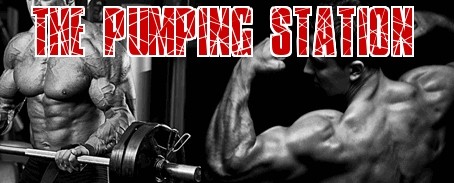How to Get a Better Bench Press
Hammering for a better bench
By Bob Shaefer
OK, before I get in-depth here, let me say, ...If you are still benching with your elbows laterally aligned 180 degrees from right to left and your bench path is leaving a red mark on your throat,what I am about to say will be of little benefit until you get past the J form syndrome. The basic elements of great importance to beginners who have yet to experience a bloody confrontation with a denim shirt, will best be served by first, getting their basic ducks in a row (read some of my earlier columns) and then dig out this column at a later Date.
Lately I'm finding myself in contact with the Bencher who has multiple shirts, already close to the top of his game, past the poly shirt phase, and looking to stay in the same weight class. When someone reaches this level, any outside suggestions usually produce an answer of "Been there, Done that".
Nonetheless, I'm talking to this group in hopes that I might reach a few who haven't touched on the these specific muscles (Brachialis and Coracobrachialis) and the importance of their development.
CONTROL...A word you'll hear over and over in a high caliber bench meet attended by competitors who flew into town the night before. With these guys, control CAN'T be lost since it can't be recovered. Lose control and down it goes, looking as if they made a huge mistake in picking a weight beyond their capability only to return 15 minutes later , blowing it up with seemingly no strain. Groove is everything.
With 700+ being practically an "Every Month accomplishment" nowadays, lack of control plays an even larger part in failed attempts. The meet bench pad might be an inch taller or an inch shorter, the width and firmness will vary from brand to brand. Possibly a stranger doing the liftoff. All and any of these unfamiliarity's can add up to a wobbly hand off and descent. Get out of groove with 250, no big deal. Get out of groove with 500+ and the possibilities for injury become a career threatening nightmare if spotters aren't synchronized. By understanding the actions of the brachialis and coracobrachialis muscles and how to build them, stable descents and ascents can be greatly improved with the inclusion of hammer curls. The brachialis muscle is a flexor situated between the two heads of the biceps, leading to, and covering the elbow. The coracobrachialis connects from the top at the pectoral insertion, running downward behind the triceps, following a path between the two heads of the biceps.
Gray's Anatomy will plainly state the duties of the two muscles once the deltoid is used to raise the arm. Any lateral motions become their major responsibility. Basic barbell curls or concentration curls done with dumbbells, do little or nothing for the Brachialis twins. Consequently, if you've read this far knowing you've never done a hammer curl in your life, this info will afford you one more weapon in the fight for a more stable and successful bench progress. Hammer curls start and finish with the palm facing the thigh, requiring no twist or turn during the motion. Do them slow.
Actually, all curls should be done slowly since we're dealing with slow twitch muscle tissue.
So I could easily just suggest, "do hammer curls" and end it. What Gray's Anatomy won't tell us beyond the added stability enhancements gained by the additional strength in this region, the process of hypertrophy begins. Then the biceps elevate, ...driven upward by the increasing development of these underlying Brachialis muscles. No matter what biceps development has been achieved, if hammer curls are not in your training history, the additional overall size from the wedge effect can actually bring the biceps in contact with the forearm when the bench bar is on the chest. Especially if you are fortunate enough to have what we call, bencher's biceps (long heads that show no reduction in size at the elbow....see Triple H).
Contact of this fashion contributes to the bench in the same way a "Huge gut to thigh" contact, fortifies the squat.
When two masses come in contact to hold the weight stationary, muscle failure is less likely. Expending the least amount of energy on the downstroke, leaves that much more when the "Press" signal reaches your ear.
Thinking along these lines sometimes comes late for a few top athletes. Leave no stone unturned. Friction created by coasting the inner head of the triceps against the lats plays a huge role as refinement in form benefits from all the mechanical advantages. Keep the elbows tucked close to the torso, don't let them flare out. Once they flare you can forget about any help from the lats. The bar will take an angled path in the hand if maximum "triceps to lats" friction is achieved. It has been my experience that the extreme angle needed usually requires a thumbless grip. A problem arises here. Thumbless grips, if used exclusively in training will relax the anterior head of the deltoid. For this reason, alternating grips geared to "Off season/ Meet preparation", seems to be the most practical way of solving the problem.
For those who use nothing but a conventional grip as the poundage increases, you might notice front deltoid soreness occasionally. A temporary switch to "thumbless" will let you train without pain once the front delt transfers the load to other muscles.
So....hammer away and take full advantage of every gravity defying change that will let you progress without injury.
Bench shirts are here to stay. Adapting your training to the needs of the shirt will have no ill effects on your "shirtless bench". Gains are gains.
Click Here to Sign Up for Your Free Bodybuilding Magazine Subscription
